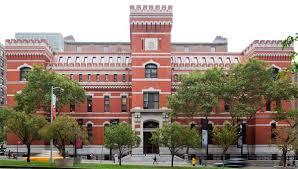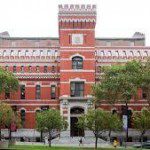Books and Art on the (Hip?) Upper East Side
By • April 6, 2016 0 1527

A National Historic Landmark, the Seventh Regiment Armory on Manhattan’s Upper East Side made an about-face in 2007.
The one-time drill hall for New York’s aristocracy — with interiors by Tiffany, Stanford White and the Herter Brothers, among others — had become best known as a cavernous venue for high-end antiques shows.
That year, the massive brick castle became the home of Park Avenue Armory, a nonprofit that undertook the building’s restoration and began to program performances and contemporary art installations. The Royal Shakespeare Company came for six weeks one summer and the Merce Cunningham Company danced its last there. Visitors listened in the dark to “The Murder of Crows,” a sound piece by Janet Cardiff and George Bures Miller; swung on giant swings amid dangling sheets at Ann Hamilton’s “The Event of a Thread”; and marveled at Paul McCarthy’s pornographic take on Snow White, “WS.”
Almost singlehandedly, the Armory has made the Upper East Side hip. (The next major installation, “Martin Creed: The Back Door,” opens June 8.) Its avant-garde events have been so successful that last year the New York Art, Antique & Jewelry Show, an annual rental of $300,000 or so, was evicted; the 2016 show will be at Pier 94 in November.
But two of the most prestigious shows of their kind in the world are still Armory tenants. The Winter Antiques Show will return in January 2017. This weekend, April 7 to 10, more than 200 of the top U.S. and international vendors of rare books, maps, manuscripts and ephemera will be at the New York Antiquarian Book Fair.
A short walk up Park Avenue from the Armory is the Asia Society Museum, between 70th and 71st Streets, where “Kamakura: Realism and Spirituality in the Sculpture of Japan” is on view through May 8. The exhibition focuses on sculpture from the politically turbulent Kamakura period (1185 to 1333), when artists and their workshops were commissioned by the warrior class to create Buddhist icons of exceptional realism, power and technical excellence.
Meanwhile, the big news on the Upper East Side is the opening, last month, of the Met Breuer. With the Whitney Museum of Art in a new Renzo Piano building in the Meatpacking District (at the southern terminus of the High Line), the Metropolitan Museum of Art has taken over the old Whitney, at Madison Avenue and 75th Street, a Brutalist icon designed by Marcel Breuer.
The inaugural exhibition at what this writer calls the Metney (until I hear from both museums’ lawyers) is “Unfinished: Thoughts Left Visible,” running through Sept. 4. Under the direction of Sheena Wagstaff, named the Met’s chair of modern and contemporary art, a new department, in 2012, the show’s curators selected nearly 200 works — by contemporary artists and by big names from Rembrandt to Rauschenberg — that were never completed or “partake of a non finito … aesthetic that embraces the unresolved and open-ended.”
About eight blocks away, at what is now identified as the Met Fifth Avenue, the top-billed special exhibition is “Vigée Le Brun: Woman Artist in Revolutionary France.” Closing May 15, the display of 80 paintings and pastels is said to be the painter’s first retrospective “in modern times.”
Finally, across Fifth Avenue from the “Big Met,” the exquisite Neue Galerie on the corner of 86th Street is the sole U.S. venue for “Munch and Expressionism,” through June 13. Organized with the Munch Museum in Oslo, the exhibition explores the mutual influences among Edvard Munch and his German and Austrian contemporaries, including Max Beckmann, Ernst Ludwig Kirchner, Oskar Kokoschka and Egon Schiele.
- Park Avenue Armory. | Courtesy Park Avenue Armory.




